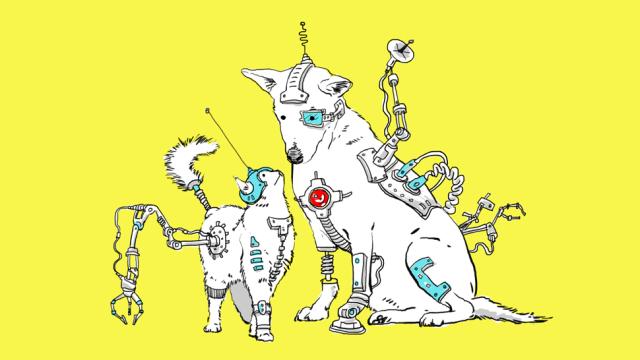Wearable tech like fitness bands and GPS trackers are all the rage, and our pets are starting to use them, too. These tools can help us monitor and track our companion animals. But these devices are also changing our pets’ capabilities and how we interact with them. We’ve entered the age of cyborg animals.
Illustration by Jim Cooke.
When you consider how much we love and care for our pets, it’s really not surprising to learn that we’re extending many of our technologies to them.
Emily Anthes, science journalist and author of Frankenstein’s Cat: Cuddling Up To Biotech’s Brave New Beasts, says it’s all part of the natural evolution of wearable device technologies. “Many of us consider our pets to be like our children or members of the family,” she tells io9,” So it makes perfect sense that we would want to track this sort of data in our pets.”
Anthes believes these devices can help pet owners become more aware of their pets’ psychological and physical health. Because animals cannot tell us the details of what’s wrong (or right) with them, these tools can help us bridge the communications gap.
Animal behaviorist and conservation biologist Con Slobodchikoff agrees. “We are finding out that dogs and cats are much more intelligent than we once thought,” he tells io9. “They can understand not only a lot of what we say to them, but our emotions as we say it. They are closely attuned to our moods, and often will seek to comfort us when we are not feeling well, just like our human friends.”
He says that this realisation has shifted them into the category of “friends” rather than dumb brutes we lock up in the back yard. We want to be with our friends, he says, and to ensure that we do the best that we can for them. “All of the devices coming on the market help us feel that we are in touch with our friends and are looking out for them,” adds Slobodchikoff. “There is a natural carry-over from human to human friends, to human to dog or human to cat friendships.”
Quantified Pet
Indeed, the things we strap on to our pets certainly aren’t what they used to be. Like fitness trackers for humans, there are now a considerable number of wearable devices that leverage similar technologies to help owners track a wide assortment of behaviours and biometric parameters. Depending on the device used, you can monitor your pet’s heart and respiratory rates, their location, and level of physical activity. Related devices can help you monitor your pet’s whereabouts with webcams, and to even communicate and play games.
Take, for example, the wearable put out by Whistle. After attaching the device to your pet’s collar, it collects data on activity throughout the day via a three-axis accelerometer.
After syncing and reviewing the data on your mobile app, you can set activity goals, leave comments on data points, and share them with friends via social networking.
Zurine Dopacio González from Wearable Technologies describes a couple more:
Another smart solution comes from Fitbark, which is a wireless activity monitor that can track activity levels, naps, daily progress and enables you to share this data with friends and family, your vet, and even shows their progresses against yours. The product also includes breed-specific guidelines so you can see where your dog stands compared to the other dogs.
Voyce Dog collar is a smart collar created by a team up of biomedical engineers, dog experts, and a veterinary institution. Voyce measures key vital signs including heart rate and respiratory rate, along with other wellness indicators such as activity, rest and calories burned. With all this data you are able to see trends in your dog’s behaviour. You will also receive customised tips, advice and relevant articles which will help you to understand how your dog is feeling, thinking and behaving.
Other wearables in this niche include I’m Tracer, a wristband that can be worn as a pet collar to help you track the location of your pet, and Pet Tracker, which can differentiate between running, sleeping, walking, and sniffing. Be Luvv has developed a product that informs you when your dog or cat is about to tread beyond a safety range that you’ve set. The size of smaller animals presents a challenge, but simple GPS trackers such as Loc8tor or G-Paws are available for cats.
Otto PetCare Systems has developed a really cool product for dogs that attaches to their collar. After connecting wirelessly to the company’s cloud services, it compares the data with your pet’s specific breed and age, letting you know how it contrasts with others.
The Otto PetCare System can also be paired with a food dispenser to calculate the quantity of food your pets require based on its caloric expenditure. Tapping on an icon can command the system to dispense the food. You can even watch a webcam to check in, and listen and talk to your pet during its meal.
Keeping Them Healthy
The point of all this, of course, is to help us stay on top of our animals’ health and emotional well-being. These new devices are allowing owners to track and respond to health issues with unprecedented speed and accuracy.
“I happen to have a dog with a heart murmur and I’m supposed to monitor his respiration,” says Anthes. “If he starts breathing much more quickly, it’s a sign that his heart condition is worsening. Right now I do it in an extremely low tech way, which is by taking out a timer and counting how many breaths he takes in a minute. If it’s over a certain threshold I have to call the doctor. But I can imagine having a respiration tracking device that could easily alert me if his breathing gets to fast; that would be much easier and far more reassuring to me than the way I’m doing it now.”
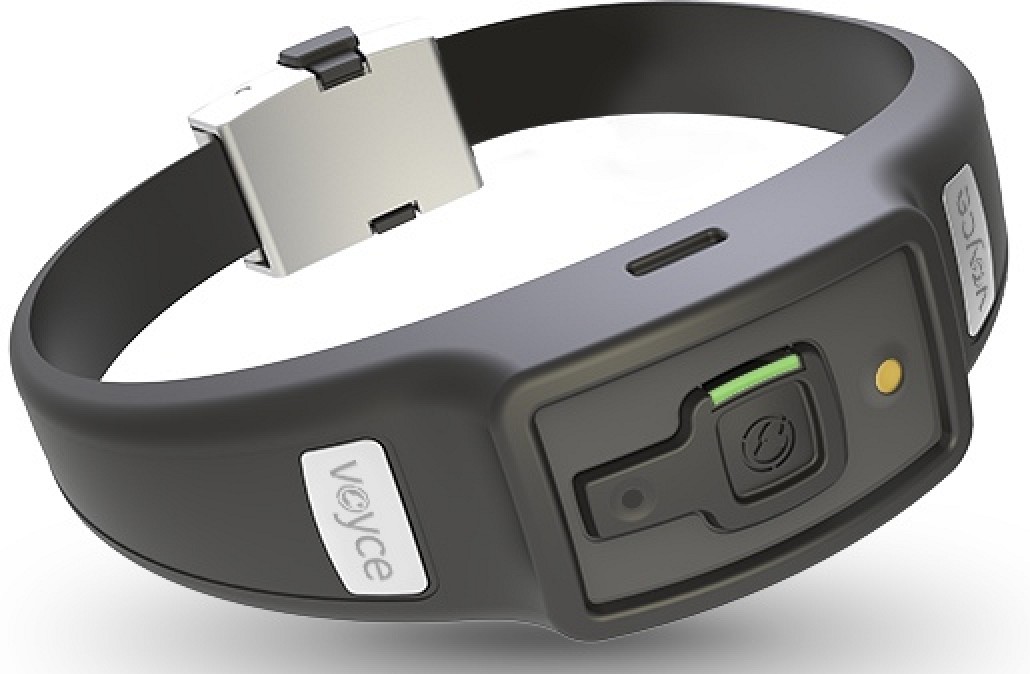
Indeed, as Jeff Noce, the president of i4C Innovations explains, “By the time you actually notice something at home [the health issue] is much further along than it would be with humans.” He says dogs instinctively tend to hide their symptoms, making health-tracking devices a necessity. To that end, his company developed Voyce.
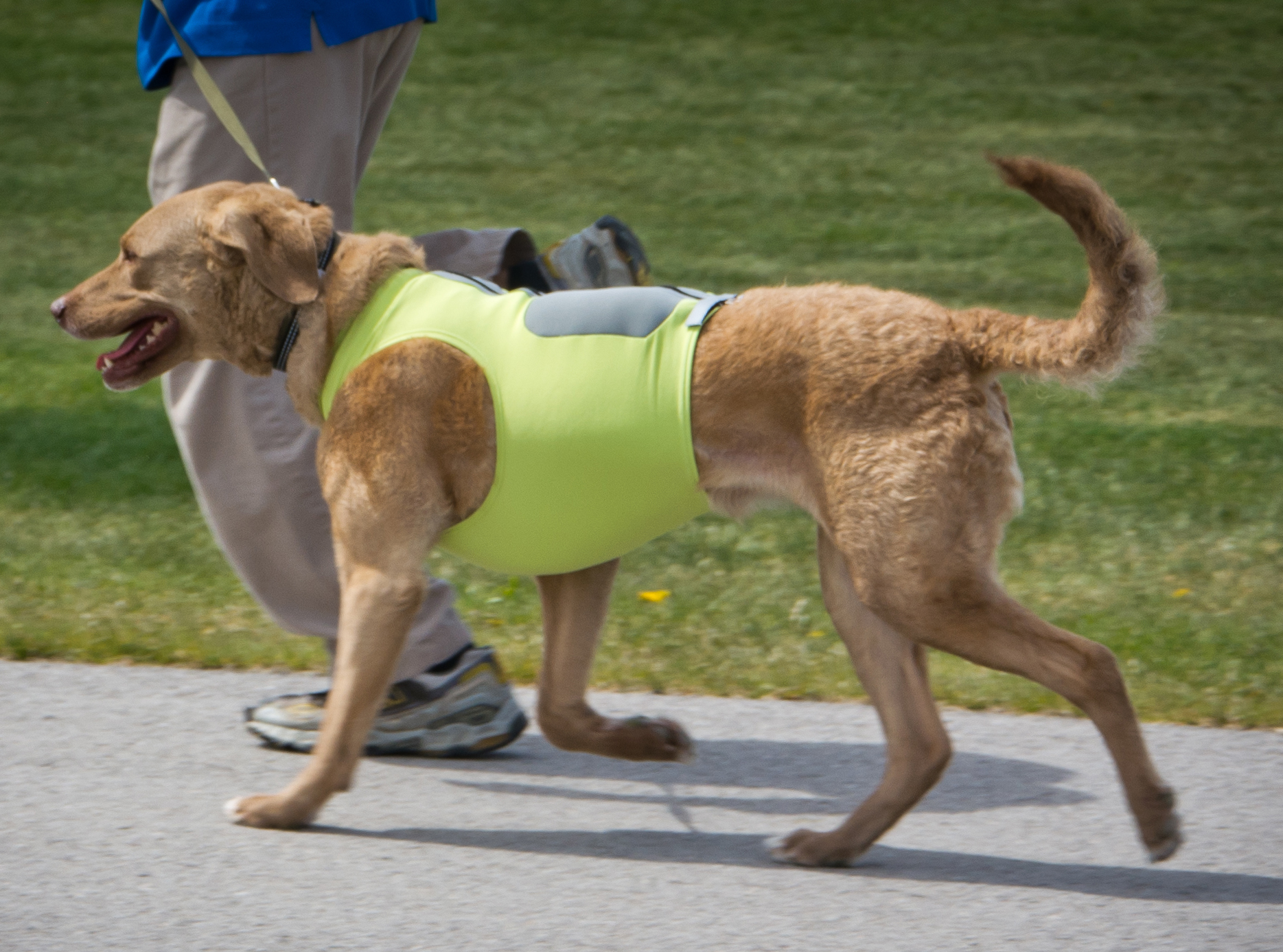
Further, these wearables could be used to measure progress in the same way that fitness trackers work in humans. In conjunction with other wearables, such as the K9FITvest, owners can get a sense as to whether or not their pet is getting fitter.
It’s also possible that the data collected by these devices could eventually help medical researchers better understand pet ailments. As noted by Nick Wingfield in the New York Times:
According to a 2012 study commissioned by the Association for Pet Obesity Prevention, more than 52 per cent of dogs and more than 58 per cent of cats are overweight or obese, conditions which can lead to diabetes and worsen arthritis.
A 14-year study commissioned by Purina, the pet food company, found that a dog’s median life span can be extended by 15 per cent by restricting the diet to maintain ideal weight, or almost two years for the Labrador retrievers in the survey. Veterinarians have used expensive motion sensors for years to study pet activity levels, but they say the new devices aimed at pet owners have the potential to be used far more broadly.
“I’m very excited about the activity monitors,” said Dr. Ernie Ward, a veterinarian and founder of the Association for Pet Obesity Prevention.
Interestingly, these devices could be used to track the health of owners, too. Subtle changes in an animal’s behaviour could indicate that something’s wrong with their humans, particularly if they’re older and isolated. Cassim Ladha and Nils Hammerla say their “collar-worn accelerometry platform“, which can recognise 17 standard dog behaviours, including chewing, peeing, shivering, and sniffing, is suitable for just a purpose. If there were a sudden change in how much walking a dog was doing, or even a gradual decline, it might indicate that the person’s mobility had become impaired. Or it could be a sign of growing depression. Essentially, our pets’ behaviours are bound up with our behaviours — and measuring one gives us clues about the other.
Cams and Games
Cameras can be used to monitor your pet, or to provide a fascinating perspective on their daily activities. Though technically not a wearable, Dropcam is a security camera that doubles as a pet monitor. It has a microphone and speaker so owners can both speak to and hear their pets via a mobile app.

For owners looking to track the indoor/outdoor activities of their cats, camera traps can be mounted onto catflaps. Recently, BBC Research & Development, when filming The Secret Life of Cats, were tasked with building a camera for the task with off-the-shelf components that can be purchased and assembled by anyone at home. You can find the instructions here.
Manufacturer Eyenimal has developed pet videocams that can be worn by cats and dogs. They’re lightweight, waterproof and feature three video recording modes: continuous, motion detection, and pointing.
Using Petcube, you can even play games with your pet when you’re not home. It’s basically a laser pointer telepresence system.
Using a mobile app, users can direct a low-intensity laser pointer with their smartphones. Owners can play games or exercise their cats (and willing dogs) by remotely moving the laser pointer. Owners can also invite Facebook friends to play with their pets by sharing access to their Petcubes.
Uplifting Technologies
There’s also the potential for future wearable technologies to enhance the intellectual capacities of cats and dogs by virtue of a kind of soft biological uplift. As noted by Slobodchikoff, we’re learning that our animal companions are far more intelligent and aware than previously thought. Using these new technologies, we’re getting an opportunity to see this intelligence manifested — and even improved — in fascinating new ways. That said, it’s worth bearing in mind that these tools are (primarily) for humans, and the risk is that they will make it easier for people to exploit animals rather than be their companions.
A good example of this augmentative potential is shown by a conceptual device called FIDO, or Facilitating Interactions for Dogs with Occupations. The Georgia Tech team building it are trying to improve communication between working dogs and the humans they assist, including canines that serve as guide, hearing, service, skilled companion, search and rescue, and police dogs.
As featured on Daily Planet’s Future Planet
Incredibly, FIDO works as a wearable computing device to help assistance dogs communicate more directly with their handlers. It allows them to send messages via devices like Google Glass. To create an interface device for the dogs, the researchers are creating sensors that the canines can trigger by tugging, biting, and using their noses. Currently, the developers have only tested one sensor per vest for research purposes, but their long term goal is to have a single wearable item equipped with multiple sensors, each of them capable of wirelessly transmitting data to a mobile phone or augmented reality device like Glass.

As noted in MIT Technology Review:
Beyond helping disabled people navigate more effectively, FIDO could enable bomb-sniffing dogs to communicate with handlers remotely about what specific type of bomb they have encountered, and rescue dogs could remotely alert a human team that they have found an injured person. A grant from Google will allow the researchers to study some of these applications. Eventually, [the researchers] could even see a device that would let a pet dog alert you if it’s hungry or needs to go out.
A number of obstacles still need to be overcome before FIDO becomes ready for prime time, including the problem of durability; this system needs to be able to stand up to spills, bumps, pressure changes, and washing.
A similar system is being developed by researchers at North Carolina State University. The goal is to cyber-enhance working dogs for search and rescue. To that end, they’re developing a dog harness that employs a range of sensor technologies to interpret canine body language for humans, and human vocalisations for dogs.
“Dogs communicate primarily through body language, and one of our challenges was to develop sensors that tell us about their behaviour by observing their posture remotely,” noted lead researcher David Roberts in a statement. “So we can determine when they’re sitting, standing, running, etc., even when they’re out of sight — a harness-mounted computer the size of a deck of cards transmits those data wirelessly.”
At the same time, they have incorporated speakers and vibrating motors, called haptics, into the harness, which enable them to communicate with the dogs. Software then collects, interprets and communicates that information, and to translate human requests into signals on the harness. The system also tracks heart rate, body temperature, and many other variables to help the handlers understand the dog’s emotional state.
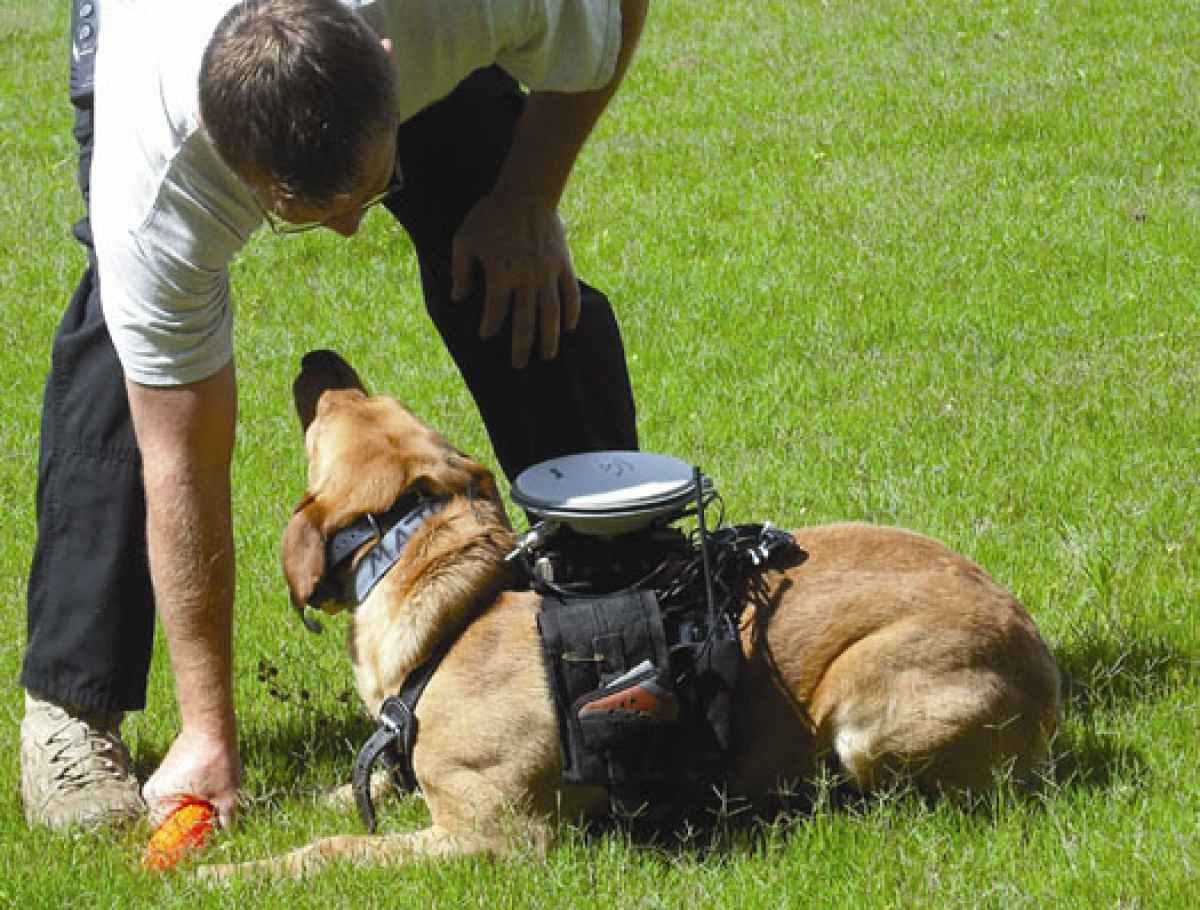
Researchers at Auburn University have developed a system that lets handlers guide dogs remotely through a software system that translates commands into auditory and tactile stimuli. Now, while this could conceivably allow an owner to “walk” their dog remotely, the system is intended for law enforcement, first responders, and the military.
Related: The CIA’s secret experiments to turn cats into spies | How cats see the world
Speaking of law enforcement, inventor S. Allen II Harvey and colleagues have developed a remotely controlled dog muzzle. The developers say a stun gun could easily be attached to it, though it’s disturbing to think of someone getting tasered by a police dog.
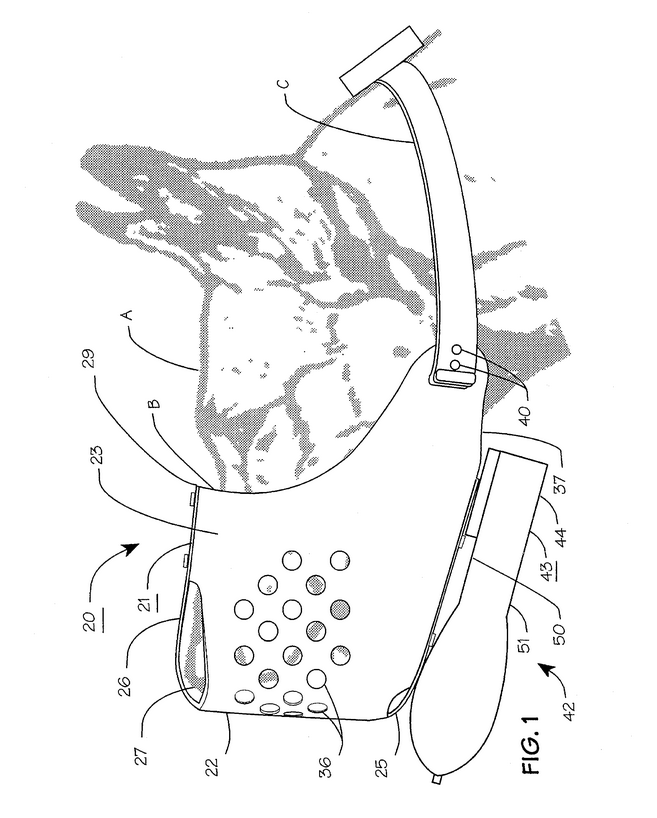
More conceptually there’s “No More Woof”, a device that’s supposed to “translate animal thoughts into human language.”
Earlier this year, the team behind the project raised over $US22,000 ($28,889) in an Indiegogo campaign. But it’s not clear if that money can be translated into a useful tool. Still in development, the EEG headset monitors brain signals and provides suggestions in real time of what the dog is supposedly feeling or thinking.
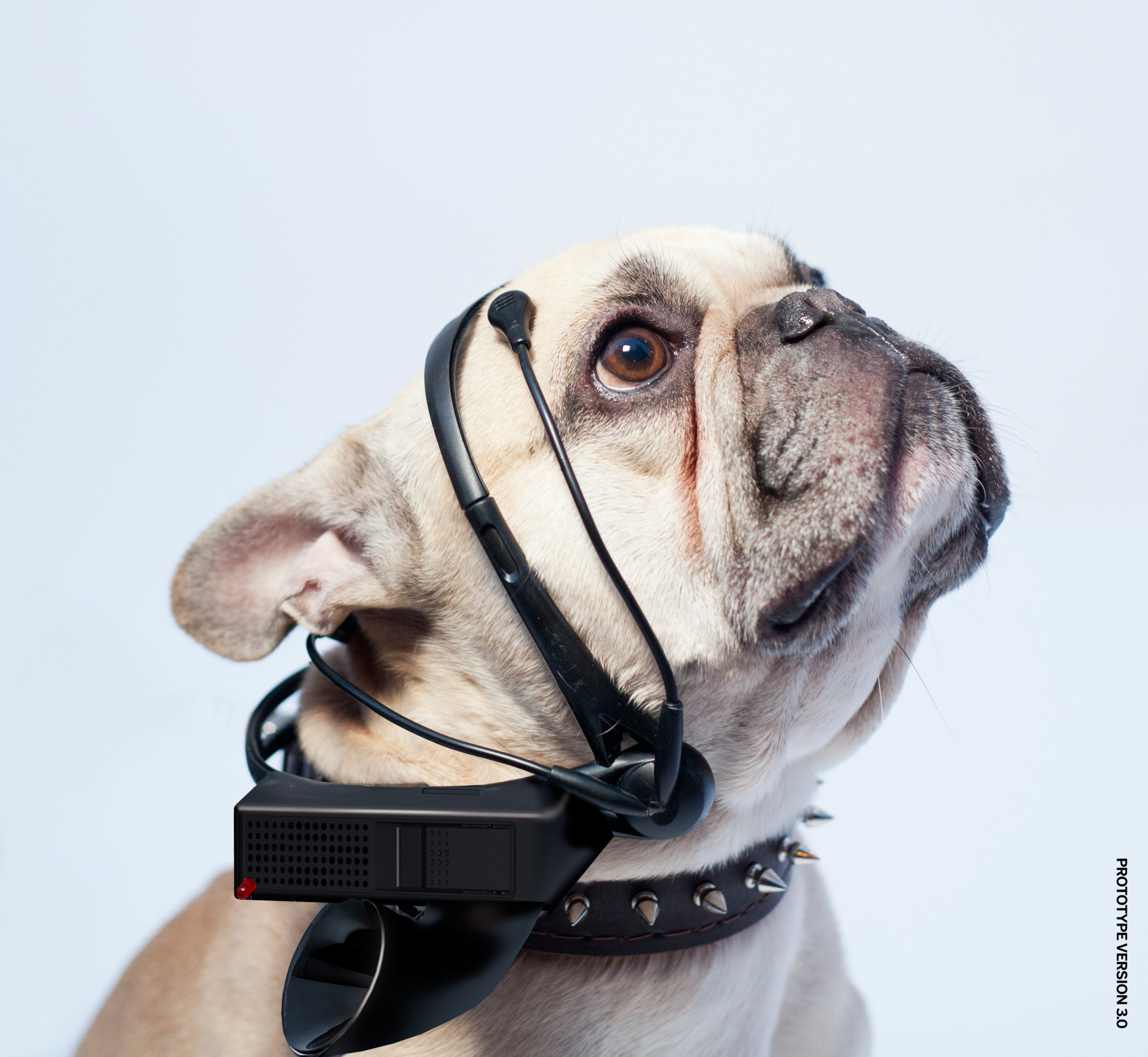
Given the inherent limitations of EEG scanning, it’s doubtful this technology will ever prove its worth. And it’s not as if dogs cannot relay their feelings through other means, like through their body language and behaviours.
Slobodchikoff and his computer scientist colleagues are taking a characteristically different approach to the same problem.
“We are now working on an artificial intelligence device that will let us talk at a basic level to dogs, using an understanding of dog language,” he tells io9. “As it stands now, we can talk to dogs and they can understand us, but we can’t always understand what they are trying to tell us. Once something like that is available, I predict that the bonds between people and dogs will grow even stronger.”
